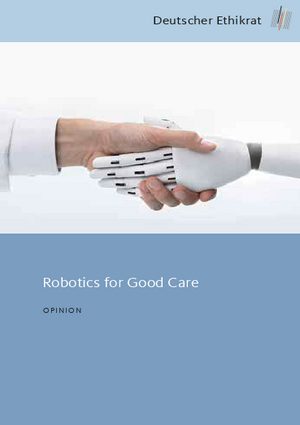Robotics for Good Care
Published: 10 March 2020
Assistance robots promise support for caregivers and people in need of care in their daily activities, offer relief for nursing staff in the form of lifting aids or support the movement of people with spinal cord injuries in the form of exoskeletons. The use of robotic monitoring techniques can delay the move to an inpatient care facility for people with an increasing need for care by enabling remote monitoring of bodily functions or ensuring rapid help in an emergency. So-called companion robots, which are, for example, offered in the shape of various animals, provide support in social interactions or serve as interaction partners themselves, thus meeting primarily communicative and emotional needs.
The research and development of such robotic systems for home and in-patient care has received considerable public funding over the last couple of years. Political justification for this policy derives from urgent infrastructural, personnel and financial problems resulting from the increasing number of people in need of care and assistance and the worsening shortage of nursing staff. In its Opinion, the German Ethics Council acknowledges the potential benefits of robotics for the entire care sector, but sees these benefits less in the elimination of staff shortages or the nursing crisis and more in its potential to promote good care. The realisation of this potential, however, requires that the use of robots does not replace interpersonal relationships, that it is not used against the will of (professional) caregivers and people in need of care or merely to maximise efficiency, and that those affected by the techniques can also participate in their development.

